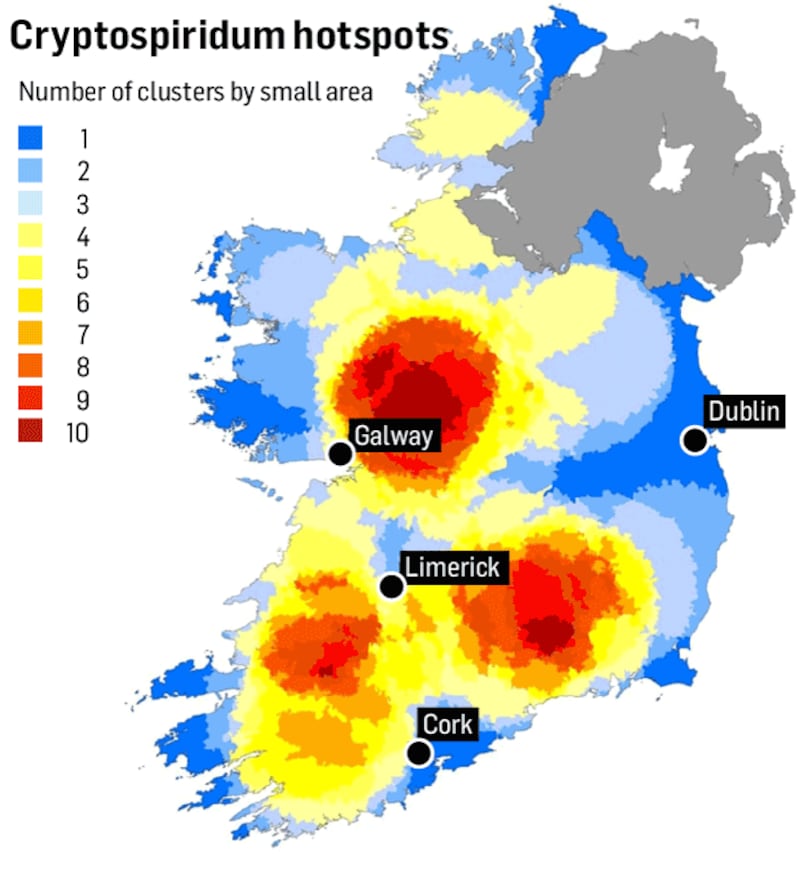The first nationwide study of cryptosporidium infections has revealed the challenge posed by the common waterborne bug in the Republic.
One in five localities recorded cases caused by the parasite over a 10-year period, an analysis has found.
Cases were recorded in 3,413 out of 18,641 census small areas (the smallest administrative unit used for census reporting) examined for the study.
Infections were recorded in 58 per cent of electoral areas, and in all 26 counties. Almost 60 per cent of cases (59.3 per cent) were in children aged five years and under.

Cryptosporidium is a parasite first identified as a cause of gastrointestinal infection in the mid-1970s. The disease it causes is associated with a wide range of symptoms including diarrhoea, weight loss, vomiting, abdominal pain, nausea and fever. In the most severe cases, infection may lead to dehydration and death, particularly among people with weakened immune systems, the very young and the old, and patients with underlying health conditions.
Despite it being a notifiable disease, the authors of the study say there remains under-reporting of cases.
Researchers identified 55 “space-time clusters”, each involving at least 10 cases, of sporadic infection, in three “high recurrence” regions. These regions did not include any large urban conurbations.
Examination
The clusters, in which cases recurred in eight out of the 10 years under examination, were in the southwest and east of Limerick city, and northeast of Galway city.
The authors of the study, from Technological University of Dublin, say the identification of 55 clusters of the disease represents a “concern” from a public health surveillance perspective.
It also underscores the major challenges involved in decreasing the incidence of infection, according to the study, published in BMC Infectious Diseases.
One cluster in the midlands gave rise to almost 18 times more infection than would be expected over a three-month period.
Sporadic cases were more likely to affect men and to occur in rural areas, while outbreaks hit women, and urban areas, disproportionately.
Sporadic cases were most likely to peak in late spring, with the highest incidence occurring in April and the lowest in the winter months.
Outbreaks tended to peak in April and also in September. Cases also tended to rise after periods of flooding, due to an increase in surface water.
Exposure
Some 4,509 cases of infection were recorded between 2008 and 2017.
Ireland has one of the highest annual incidences of cryptosporidiosis in Europe, at times up to 10 times the EU average.
Most cases occur in rural areas, with this attributed to increased exposure to sources of the parasite, including farmyard animals, exposure to contaminated surface waters and the use of groundwaters as a drinking source.
In contrast, urban areas, where exposure to these factors is lower and treated water supplies are available, report lower incidence.
The Environmental Protection Agency detected cryptosporidium in 25 public water supplies in 2018, up from 12 in 2016. The agency expressed concern about supplies that have inadequate processes in place to remove the parasite, and some where no treatment takes place at all.















